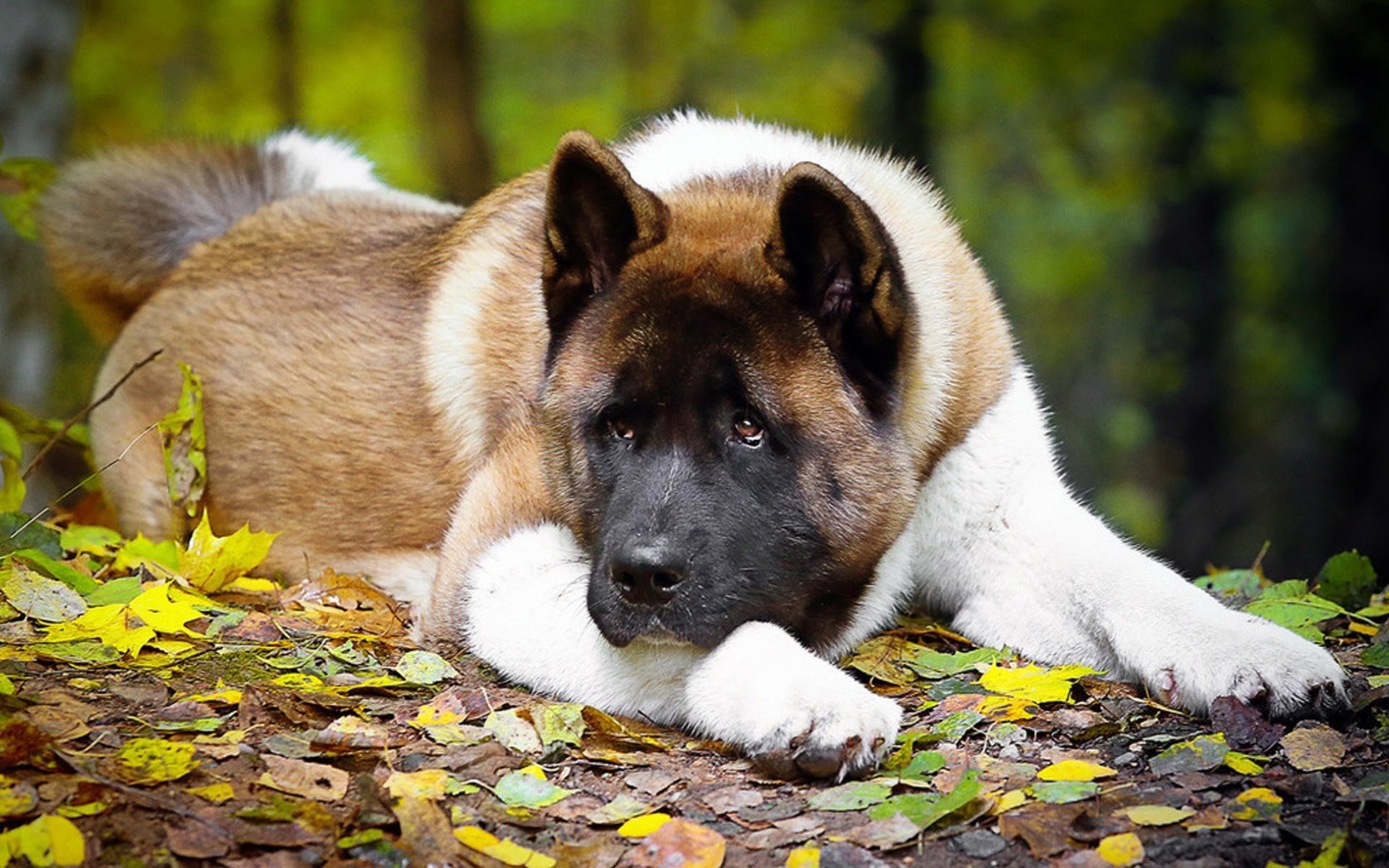Find out everything about the behavior, character, activity, and exercise needs, training, and care of the American Akita dog breed in the profile.
The Akita and the American Akita have their origin in Japan and so their development is almost the same until about 1950. During World War II, the breed’s numbers drastically declined as the military used dog fur for uniform production. Only German shepherds used for military purposes were spared this fate. Therefore, to protect their Akitas, some breeders crossed their dogs with German shepherds.
Only after the end of the war did several breeders try to restore the original breed characteristics. US soldiers brought some Akitas with them to the US. These dogs predominantly embodied the Dewa or Kongo-Go type. In the years that followed, a sizeable population developed from them. In 1972 the American Akita was recognized as a separate breed in America. However, Japan did not recognize this line. In 1996, the FCI took account of the situation by dividing the breeds.
General Appearance

Large, strong, harmoniously built dog, with a lot of substance and heavy bone structure. The broadhead is in the shape of an obtuse triangle. The deep muzzle, rather small eyes, and erect ears are characteristic of this breed. The topcoat is straight, harsh/stiff, and stands up slightly from the body. The undercoat is thick, soft, and dense. According to the VDH, all colors such as red, fawn, or white are permissible, including brindle and piebald. The coloring is bright and clear.
Behavior and temperament
Friendly, attentive, receptive, obedient, and courageous – these are the attributes assigned to the American Akita by the breed standard. The Akita is an independent and self-reliant dog. He usually develops a strong bond with his caregiver without appearing submissive. The self-confident dog behaves friendly to indifferent towards strangers. At home, he is very quiet. This breed does not always get along well with other dogs. Outdoors, Akitas show their hunting instincts, which is why the dogs must be closely controlled by their owners in this regard.
Need for employment and physical activity
American Akitas need a lot of exercises. They are excellent for various dog sports and make good sporting partners for humans. In some dogs, however, the hunting instinct is so strong that the most consistent control and training are necessary outdoors. It is important that the owner offers the dog a lot of variety and also challenges him mentally. Due to his calm nature, he is able to work with concentration and perseverance. Nose work is particularly good for Akitas.
Upbringing
The American Akita is a good-natured dog who is willing to learn. But because he is also incredibly stubborn, his upbringing requires patience and consistency. Pressure and hardness are out of place here, otherwise, the Akita would just switch to stubborn. Once you have found contact with your dog, the Akita is capable of good performance and impresses you with its ability to learn. This breed is hardly suitable for beginners in dog ownership.
Maintenance
The American Akita has a “double” coat, called stick hair, that consists of a soft, dense undercoat and a longer topcoat. Thanks to its dirt and water-repellent properties, this breed’s coat does not tangle and requires little maintenance. Only during the change of coat, which takes place twice a year, does the coat need to be brushed several times a day. During this time, the Akita gradually loses all of its undercoat and topcoat. Dog owners should always have vacuum cleaners on hand during these phases.
Did you know?

The Akita was originally bred in Japan as a hunting dog. The American Akita has also preserved this legacy, which is why consistent training is necessary.
